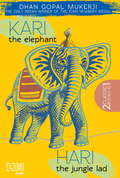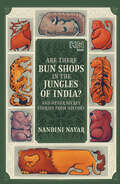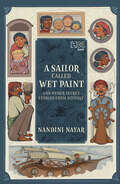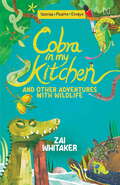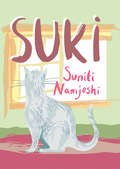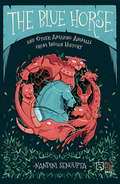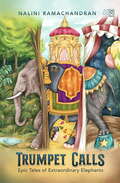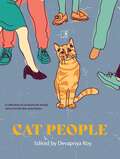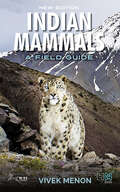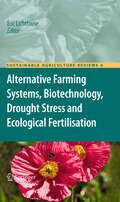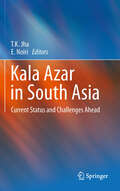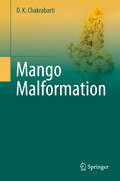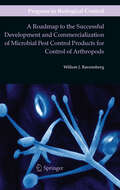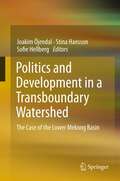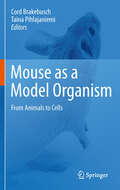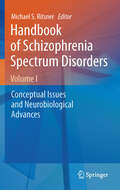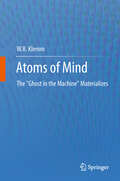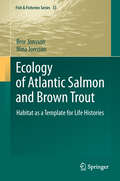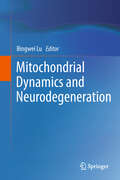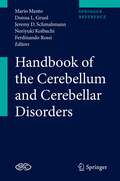- Table View
- List View
Adventure Stories
by BPI India Pvt Ltd"Adventure Stories" is collection of short stories, The book is design to reading out to kids or encouraging them to read stories and develop children's oral skills.
Bedtime Stories
by BPI India Pvt Ltd"Bedtime Stories" is collection of short stories, The book is design to reading out to kids or encouraging them to read stories
Kari the Elephant & Hari the Jungle Lad
by Dhan Gopal MukerjiKari, the loyal elephant, Kopee, the monkey known for making bad decisions, and their nine-year-old master head right into the middle of the jungle on an adventurous journey.Vivid episodes of encounters with a venomous snake, a herd of untamed elephants and forest fires, make Kari the Elephant an unusual tale of three friends growing up together. The endearing elephant reappears in Hari the Jungle Lad, which traces a young boy’s life after a flood washes away his home, leaving him to survive in the jungle. His thrill-a-minute life in the forest, complete with face-offs with deadly carnivores and friendly monkeys, and finally his search for the marked elephant who proves to be a saviour, unfold in a gripping story. This special edition brings together two classic stories – Kari the Elephant and Hari the Jungle Lad – by Dhan Gopal Mukerji, the only Indian to have won the John Newbery Medal. Describing animal life with nail-biting realism, Dhan Gopal Mukerji’s stories take you to a place where the feral meets the tame, man meets nature, and all that matters is the law of the jungle!
Are There Bun Shops in the Jungles of India? And Other Secret Stories from History
by Nandini NayarWhen was the last time the MIGHTY tiger roamed freely under the open sky?What is the SLEEK leopard from sunny India doing in FREEZING England?How will the HUGE rhinoceros stay in a SMALL, cramped cage?And why, oh why, is the ENORMOUS elephant eating tiny BUNS in the zoo?Leopards and cheetahs, bears and antelopes, monkeys and deer...it's the same SORRY tale. These animals from India have been CAGED for the amusement of people - to be prodded and poked and teased! It's upsetting. It's shocking. It's breaking our hearts. What are we to DO? Well, we have written letters - a whole SHEAF of them - to the owners of menageries and the zoo, asking them to STOP this cruelty NOW. To give the animals the food, the care and the freedom they deserve. But ARE they reading them? Are YOU?
A Sailor Called Wet Paint and Other Secret Stories from History
by Nandini Nayar"What can a lady in a thin sari do to survive in COLD England?How will a ship's crew RETURN home without any money?When did the young ayah last see her OWN family?And why, oh why, did the sailor write WET PAINT in a young girl's diary?Nannies and sailors taken 4,000 miles away to England to work...it's the same SORRY tale. Often ABANDONED, they have to find their own way across the sea, back home to India! It's upsetting. It's shocking. It's breaking our hearts. What are we to DO? Well, here are stories - a whole SHEAF of them about AYAHS in a foreign land and the Indian crew of LASCARS on ships, questioning why the British don't treat these people kindly. Asking to give them the home, the care and the freedom they deserve. But is ANYONE listening? Are YOU? "
Cobra in My Kitchen and Other Adventures with Wildlife
by Zai WhitakerROAR! HISS! SQUEAK! NYUK-NYUK!Wildlife sure sounds fun, doesn't it? Explore the wild with Zai Whitaker, an eager adventurer raised among India's pioneering conservation heroes! Together with Romulus Whitaker, the 'Snake Man of India', Zai developed the Madras Crocodile Bank, to research and conserve crocodiles and other 'herps'. From living with cobras as to hatching sea turtles and from watching birds to stalking termites, Zai has a long and thrilling trail of escapades. Her stories, poems and real-life accounts take you from Chennai to the Western Ghats, from the Andaman and Nicobar Islands to Papua New Guinea, and beyond into her wildly wonderful imagination! Beautifully illustrated, Cobra in my Kitchen and Other Adventures with Wildlife introduces you to the fascinating side of wriggly snakes, jumpy frogs, lively lizards, colourful chameleons and even a tiger or two, along with many more unmissable adventures! Hop on to this sensational safari of discoveries for children and the whole family!
Ark on the Move
by Gerald DurrellDurrell dramatically reveals the plight of endangered species and shows us the serious consequences to life and its future on this earth. The islands of Mauritius and Madagascar provide the exotic setting for Durrell's most recent expedition.
Suki
by Suniti NamjoshiIn 'Suki', fabulist Suniti Namjoshi weaves a delightful tapestry from threads of longing, loss, memory, metaphor, and contemplation. The whole picture is a stunning evocation of the love and friendship shared between S and her Super Cat, Suki, a lilac Burmese. Suki suggests that she could be a goddess, and S her high priestess. S declines, but as they discuss the merits of vegetarianism, or the meaning of happiness, or morality, or just daily life, it soon becomes clear that the bond between them is a deep and complex one. The days of Suki's life are figured as leaves, which fall vividly but irrevocably into time's stream and are recollected with a wild tenderness by the grieving S, who learns through the disciplines of meditation how to lose what is most loved. This beautiful narrative, both memoir and elegy, offers solace and celebration to everyone who has felt the trust that passes between a person and a beloved creature.
The Blue Horse and Other Amazing Animals from Indian History
by Nandini SenguptaIt’s not just humans who make history, you know. So move over, chroniclers and historians. For centuries, we’ve been ignored, forgotten, occasionally footnoted (thanks a lot). It’s time we took centre stage. Strongest allies, faithful friends…we’ll even go so far as to say we were the soulmates of great kings and queens, princes and princesses, warriors and administrators. From saving their lives (while putting ours at risk) and leading them to victory in war to being a constant source of joy and love, we’ve done it all. Take a tour of Akbar’s dazzling court with his favourite cheetah, Samand Manik. Learn about the heroic battle of Haldighati – straight from Chetak’s mouth. Find out what Chhatrapati Shivaji was really like – from his dog, Waghya. Full of daring exploits, epic romances and heart-wrenching moments, these underdog (oh calm down, Bucephalus, it’s just a term!) stories are unlike anything you’ve ever read before!
Trumpet Calls: Epic Tales of Extraordinary Elephants
by Nalini RamachandranTo some, elephants are the guardians of forests; to others, they are sacred symbols - worthy of being worshipped. They were comrades-in-arms to kings and queens in one time, and objects of entertainment in another.Drawing from contemporary accounts, world history and mythologies, this enlightening book, peppered with fascinating facts and gorgeous illustrations, explores the complex relationship between elephants and humans across the ages.Here, you will meet elephants who can fly and vanquish nightmares, turn the tide of a battle, trek up mountains and swim like champions, avenge wrongs and form lifelong bonds.Funny, joyful, often profoundly moving and sometimes downright heartbreaking, Trumpet Calls takes you on the wild and wondrous trail of the most majestic creature on earth.
Cat People
by Devapriya RoyIn Karachi, a writer house-sits for her father and his cat, while keeping track of his - the cat&’s - list of obsessions: ironed white sheets, kheer, KFC fries, warm custard, finely chopped sausages, and the flaky tops of chicken patties. In San Francisco, a couple adopt a cat, without anticipating what it will do to their relationship. In Noida, a cat and two dogs line up peacefully every morning for their daily dose of vitamin syrup. In Bombay, a lyricist and screenwriter roots through the litter tray first thing in the morning, to investigate if his cat&’s UTI is better. In wintry London, a young millennial wonders if she is actually a cat.Capturing the many moods of felines and their humans, in many forms and voices, Cat People, is a timely celebration of the most memed creature today: the cat. This collection of short stories, personal essays, lists, original art and photographs is are a treat, not just for cat lovers everywhere, but for all who love a story well-told – and, on occasion, a theory well-spun.
Indian Mammals: A Field Guide
by Vivek MenonA fully updated edition of the bestselling guide to the mammals of IndiaCovering the rich diversity of mammal species in India, from tigers, elephants, rhinoceros and whales to primates, rodents and bats, Indian Mammals is field-ready, illustrated and comprehensive in approach. Rigorously researched, Indian Mammals reflects a lifetime's work by Vivek Menon, one of India's leading authorities on Indian wildlife. Planned for easy reference, this compact guide is the essential resource for wildlifers of any age, including animal watchers, eco-tourists and active conservationists. * More than 440 species of both terrestrial and aquatic mammals with introductory pages on each order * Describes key identification features, biometrics, behaviour, social strategies, habitat and distribution * Over 1,000 carefully curated photographs and supplementary illustrations * 140-plus updated distribution maps * Colour tabs for sections to facilitate ease of use * Live-action field notes from the author
The Amazon Várzea: The Decade Past and the Decade Ahead
by Christine Padoch Mauro L. Ruffino Miguel Pinedo-Vasquez Eduardo S. BrondízioThis book takes a multi-disciplinary and critical look at what has changed over the last ten years in one of the world's most important and dynamic ecosystems, the Amazon floodplain or várzea. It also looks forward, assessing the trends that will determine the fate of environments and people of the várzea over the next ten years and providing crucial information that is needed to formulate strategies for confronting these looming realities.
Alternative Farming Systems, Biotechnology, Drought Stress and Ecological Fertilisation (Sustainable Agriculture Reviews #6)
by Eric LichtfouseSustainable agriculture is a rapidly growing field aiming at producing food and energy in a sustainable way for our children. This discipline addresses current issues such as climate change, increasing food and fuel prices, starvation, obesity, water pollution, soil erosion, fertility loss, pest control and biodiversity depletion. Novel solutions are proposed based on integrated knowledge from agronomy, soil science, molecular biology, chemistry, toxicology, ecology, economy, philosophy and social sciences. As actual society issues are now intertwined, sustainable agriculture will bring solutions to build a safer world. This book series analyzes current agricultural issues, and proposes alternative solutions, consequently helping all scientists, decision-makers, professors, farmers and politicians wishing to build safe agriculture, energy and food systems for future generations.
Kala Azar in South Asia
by E. Noiri T. K. JhaTherapeutic regimens for visceral leishmaniasis (also Kala-azar, Dum-dum fever or black fever), caused by parasitic protozoa of the Leishmania genus, evolve at a pace never seen before. Spread by tiny and abundant sand flies, the parasite infects internal organs and bone marrow and if left untreated will almost always result in the death of the host. In developing countries successful diagnosis and treatment are complicated by asymptomatic cases, undernutrition and Kala-azar/HIV co-infections. This book brings together world-renown experts writing state-of-arts review on the progress in diagnosis and treatment of visceral leishmaniasis, ultimately leading to the complete elimination of this fatal disease from South Asia. The chapters provide valuable information for disease control as well as therapy and the diagnostic improvements necessary for early treatment, subclinical detection and drug-resistant cases. The presented methods allow for points-of-care testing in the endemic area, enabling rapid detection in resource-poor settings with easy handling and low costs. This book provides essential information for scientists, medical practitioners and policy makers involved in the diagnosis, treatment and elimination of Kala-azar.
Mango Malformation
by D. K. ChakrabartiMalformation disease of mango (Mangifera indica) initially noted in patches in India has now turned into a global menace wherever mango is grown. The challenge posed by the problem attracted interest of Scientists from various disciplines, continue to do so, and will attract their attention until the problem is understood threadbare, and resolved. For a long time, due to complex nature of the disease, the cause and causal agent was both hotly debated. Only in recent years, the issue of the etiology of the disease has been resolved, epidemiology has been worked out to a large extent and silver bullet control measures have been replaced by IPM strategy based on the information generated on the physiology of pathogenesis and epidemiology of the disease.
A Roadmap to the Successful Development and Commercialization of Microbial Pest Control Products for Control of Arthropods (Progress in Biological Control #10)
by Willem J. RavensbergBiocontrol is among the most promising methods for a safe, environmentally benign and sustainable pest control. Microbial pesticides offer a great potential, and it is anticipated that they will become a substantial part of the use of all crop protection products. Their development and commercialization, however, has been difficult and with many failures. In this book a rational and structured roadmap has been designed for the development and commercialization of microbial pest control products for the control of arthropod pests. The building blocks of the entire process are identified and essential aspects highlighted. Biopesticides based on entomopathogenic bacteria, fungi, viruses and nematodes are elaborately discussed. This systematic roadmap with a strong focus on economics and market introduction will assist academic researchers and industrial developers of biopesticides in accomplishing their goal: the development of successful cost-effective microbial pesticides.
Politics and Development in a Transboundary Watershed
by Joakim Öjendal Sofie Hellberg Stina HanssonWater - and its governance - is becoming a global concern partly because it is turning into a goods in short supply, with devastating effects on literally billions of people, but also because it is the "carrier" of global warming; whether through irregular weather patterns or through flooding, water is how global warming will be 'felt'. The lion's share of the globally available fresh water resources is to be found in transboundary systems. In spite of its significance, the generated knowledge on how to deal with transboundary waters is weak and leaves policy makers with seemingly unavoidable, trade-off dilemmas and prioritizations, often with detrimental effects. In order to disentangle this predicament this volume works with one case: the Lower Mekong Basin and covers state-of-the-art academic and practitioners' knowledge and hence appeals to a wide audience. The topic this volume addresses is situated in the nexus of an IR- (International Relations) approach focussing on transboundary politics and its inclination to remain within the sphere of state sovereignty and national interest on the one hand, and Development studies, with its imperatives on participation, planning, and intervention, on the other. The dilemma, we argue, of better understanding transboundary water management lies in how to understand how these two rationalities can be simultaneously nurtured. Audience: This book will be relevant to scholars, as it provides cutting-edge research, and students, since it covers the primary debates in the field, interested in resource management, regional politics, and development issues in the area. It also addresses the global debate on transboundary water management and presents an in-depth case of one of the globally most sophisticated attempts at pursuing sustainable river basin management. Finally, practitioners and policymakers would benefit greatly because all contributions have explicit policy relevance, launching suggestion on improvements in water management.
Mouse as a Model Organism
by Cord Brakebusch Taina PihlajaniemiCell culture based research is important for our understanding of biological processes at the cellular and molecular level. Using this approach, the previous decades have produced a wealth of mechanistic information in all areas of biomedical research. Such in vitro research, however, lacks the complexity of in vivo investigations, where many different cell types interact with each other in a normal, three-dimensional environment, with normal levels of cytokines and growth factors. Furthermore, complex human diseases, such as cancer, diabetes or chronic inflammation, can only be modeled in vivo. Due to its small size, its short reproduction time, and the possibility to introduce specific gene mutations, the mouse has become the favourite mammalian model organism to study in vivo function of genes during development and in disease. This book combines review articles on selected subjects presented at the symposium "Mouse as a Model Organism - From Animals to Cells", held in Rovaniemi, Finland, 2009. Among other topics, high-throughput phenotyping of mouse mutants, mouse phenotypes dependent on nature and nuture, and a spectrum of in vivo, ex vivo and in vitro methods to study cancer in mice are described. This book will give an excellent introduction to scientists interested in the use of mice as a model to understand complex biological questions in the post-genomic era. It will highlight the possibilities, but also discuss the current problems and shortcomings, to give a realistic view of the current state-of-art in this fascinating field of biomedical research.
Handbook of Schizophrenia Spectrum Disorders, Volume II
by Michael S. RitsnerA few disorders have some of the same symptoms as schizophrenia including schizoaffective disorders, schizophreniform disorder, schizotypal and schizoid personality disorders, delusional disorder, and autism (schizophrenia spectrum disorders). Since the 2000 there has been significant progress in our understanding of the early presentations, assessment, suspected neuropathology, and treatment of these disorders. Recent technological breakthroughs in basic sciences hold promise for advancing our understanding of the pathophysiology of schizophrenia spectrum disorders. This collective monograph reviewers recent researches regarding the origins, onset, course, and outcome of schizophrenia spectrum disorders. In particular, this book will be illustrate new developments in terms of conceptual models, and research methodology, genetics and genomics, brain imaging and neurochemical studies, neurophysiology and information processing in schizophrenia spectrum disorders patients. Also will be highlighted new developments in our understanding of the childhood psychosis, prodromal and first-episode states, in treatment and rehabilitation. Thus, the purpose of this book is to provide up-to-date overview of the rapid advances made in the clinical and basic science studies supporting our understanding of the relationship between cerebral processes and clinical, cognitive and other presentations of the schizophrenia spectrum disorders. In addition, this book aims to monitor important research developments, which may be relevant to treatment, and rehabilitation of patients.
Atoms of Mind: The "Ghost in the Machine" Materializes
by W. R. KlemmThis book describes the author's view of how the mind "thinks" at various levels of operation. These levels include nonconscious mind (as in spinal/brainstem reflexes and neuroendocrine controls), subconscious mind, and conscious mind. In the attempt to explain conscious mind, there is considerable critique of arguments over whether or not free will is an illusion. Finally, the author summarizes current leading theories for consciousness (Bayesian probability, chaos, and quantum mechanics) and then presents his own theory based on patterns of nerve impulses in circuits that are interlaced coherently into larger networks.
Ecology of Atlantic Salmon and Brown Trout
by Bror Jonsson Nina JonssonDestruction of habitat is the major cause for loss of biodiversity including variation in life history and habitat ecology. Each species and population adapts to its environment, adaptations visible in morphology, ecology, behaviour, physiology and genetics. Here, the authors present the population ecology of Atlantic salmon and brown trout and how it is influenced by the environment in terms of growth, migration, spawning and recruitment. Salmonids appeared as freshwater fish some 50 million years ago. Atlantic salmon and brown trout evolved in the Atlantic basin, Atlantic salmon in North America and Europe, brown trout in Europe, Northern Africa and Western Asia. The species live in small streams as well as large rivers, lakes, estuaries, coastal seas and oceans, with brown trout better adapted to small streams and less well adapted to feeding in the ocean than Atlantic salmon. Smolt and adult sizes and longevity are constrained by habitat conditions of populations spawning in small streams. Feeding, wintering and spawning opportunities influence migratory versus resident lifestyles, while the growth rate influences egg size and number, age at maturity, reproductive success and longevity. Further, early experiences influence later performance. For instance, juvenile behaviour influences adult homing, competition for spawning habitat, partner finding and predator avoidance. The abundance of wild Atlantic salmon populations has declined in recent years; climate change and escaped farmed salmon are major threats. The climate influences through changes in temperature and flow, while escaped farmed salmon do so through ecological competition, interbreeding and the spreading of contagious diseases. The authors pinpoint essential problems and offer suggestions as to how they can be reduced. In this context, population enhancement, habitat restoration and management are also discussed. The text closes with a presentation of what the authors view as major scientific challenges in ecological research on these species.
Mitochondrial Dynamics and Neurodegeneration
by Bingwei LuMitochondria are essential organelles in eukaryotic cells that control such diverse processes as energy metabolism, calcium buffering, and cell death. Recent studies have revealed that changes in mitochondrial morphology by fission and fusion, a process known as mitochondrial dynamics, is particularly important for neuronal function and survival. Defects in this process are commonly found in neurodegenerative diseases, offering a new paradigm for investigating mechanisms of neurodegeneration. To provide researchers working on neurodegenerative diseases and mitochondria with updated information on this rapidly progressing field, we have invited experts in the field to critically review recent progresses and identify future research directions. The topics include genetics of mitochondrial dynamics, mitochondrial dynamics and bioenergetics, autophagy, apoptosis, and axonal transport, and its role in neurological diseases, including Alzheimer's, Parkinson's, and Huntington's diseases.
Handbook of the Cerebellum and Cerebellar Disorders
by Donna Gruol Ferdinando Rossi Jeremy Schmahmann Mario Manto Noriyuki KoibuchiOur knowledge of cerebellar functions and cerebellar disorders, called ataxias, is increasing considerably. Studies of the cerebellum are now a central focus in neuroscience. During the last four decades, many laboratories worldwide have dedicated their research activities to understanding the roles of the cerebellum in motor control, cognitive processes and biology of mental processes, behavioral symptoms, and emotion. It is now accepted that the cerebellum acts as a cognitive operator in learning, perception, and attention. Moreover, major improvements in our assessment of in vivo cerebellar architecture using imaging techniques have occurred. A typical example is the accurate description of cerebellar anatomy during fetal development with MRI, a progress which has direct impacts on patient care. These advances have been associated with discoveries of new clinical disorders, in particular in the field of genetic ataxias. More than 20 new genes have been identified these last 10 years. Only for dominant ataxias, more than 30 diseases have now been unravelled. The number of ataxic disorders will increase with aging, the cerebellum being the structure of the brain with the most important loss of neurons with age. More than 300 different cerebellar disorders are encountered during daily practice, but we are missing a single source of information explaining their pathogenesis. Despite the immense amount of knowledge acquired about the cerebellar circuitry these last years, a large book covering the neuroscience of the cerebellum is missing. The goal of this endeavour is to bring up to date information relevant for basic science and also for clinical activities. To reach this goal, the most renowned authors are gathered in a unique and in-depth book with a format of a handbook. We emphasize the connections between molecular findings, imaging features, behavioural/neuropsychological aspects, and clinical implications.

